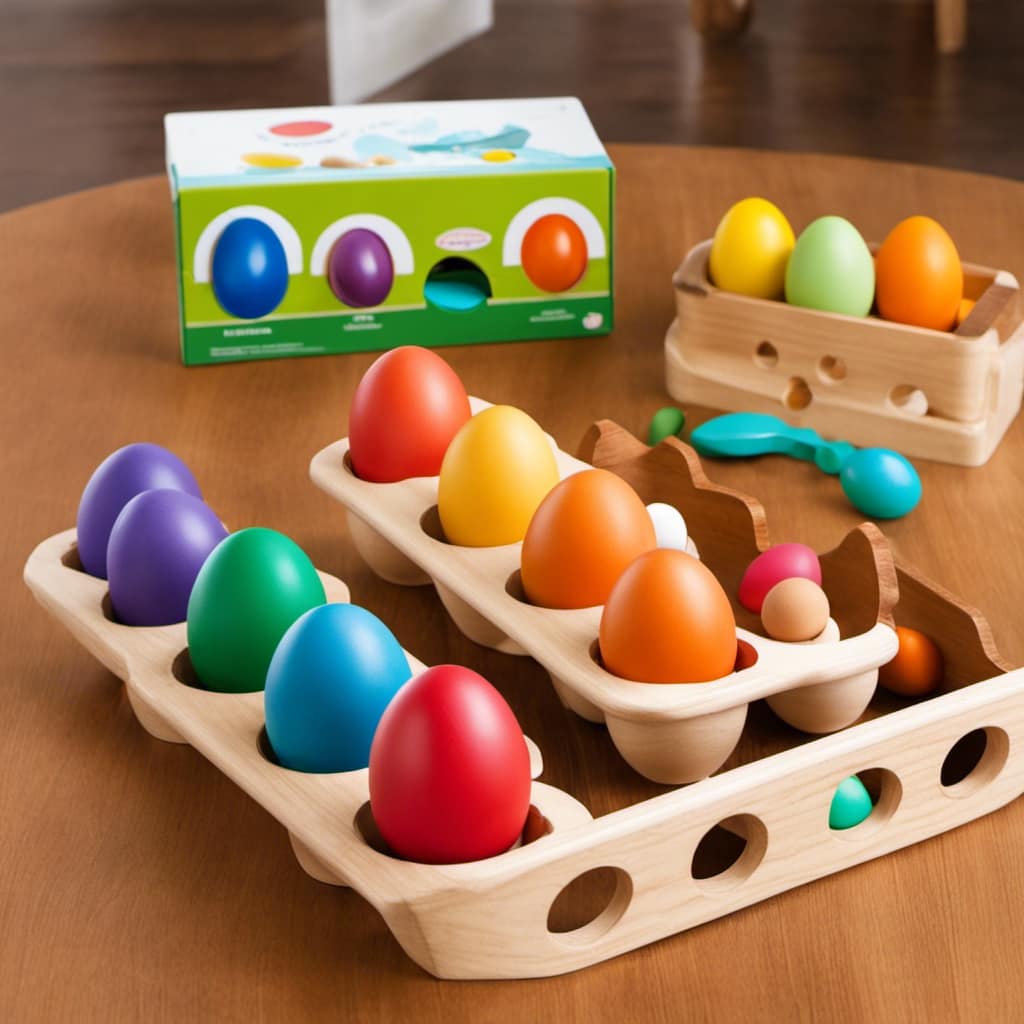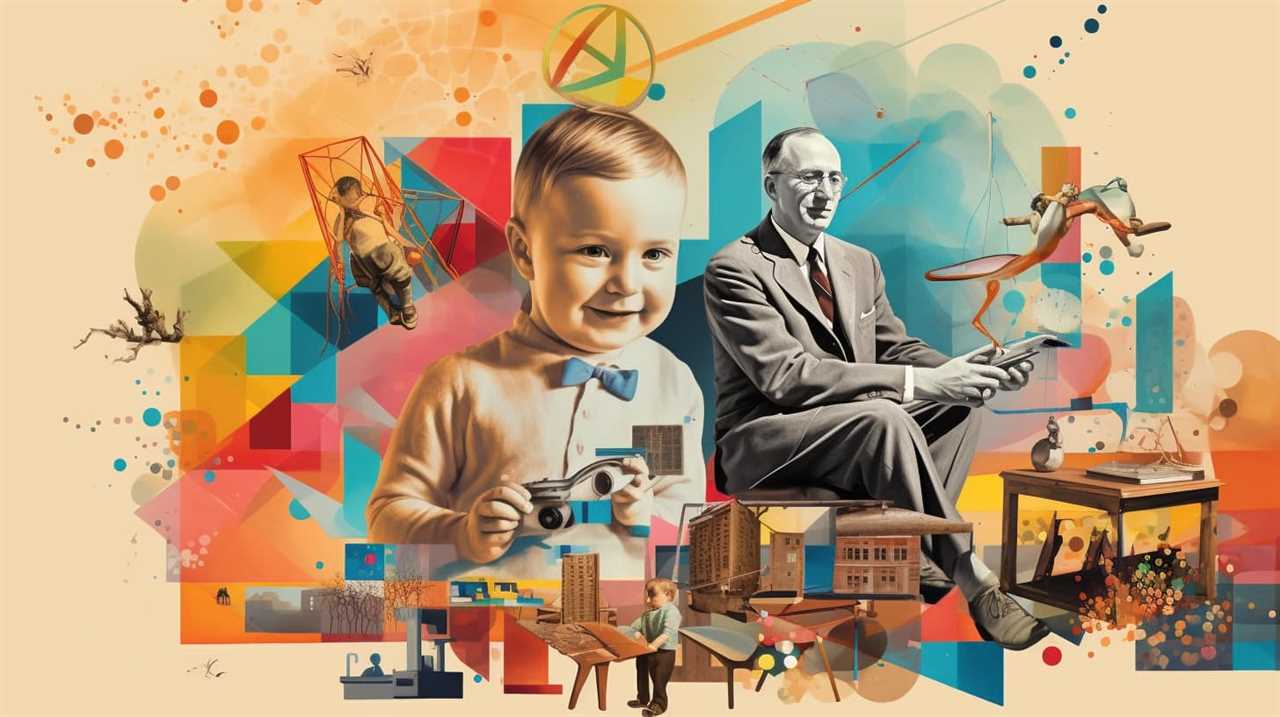The phrase “Music and movement are what make the world go round” rings true in the realm of child development, where the impact of these elements is undeniably significant.
I’ve witnessed firsthand how engaging in music and movement activities can positively impact a child’s growth and well-being. From enhancing cognitive skills like memory and problem-solving, to promoting emotional regulation and social skills, to boosting language and communication development, the benefits are endless.
In this article, we will explore the incredible ways in which music and movement shape a child’s development.
Key Takeaways
- Music and movement activities stimulate cognitive skills such as memory, problem-solving, analytical thinking, and creativity.
- Engaging in music and movement enhances emotional regulation, promoting self-awareness, expression of feelings, social skills, empathy, emotional intelligence, and resilience.
- Participating in music and movement activities enhances verbal and nonverbal communication skills, language development, vocabulary, and comprehension.
- Music and movement activities contribute to physical development, motor skills improvement, coordination, balance, and body awareness.
Cognitive Development and Academic Performance
Engaging in music and movement activities enhances my cognitive skills, such as memory, problem-solving, analytical thinking, and creativity.
Research has shown that music has a profound impact on memory enhancement. When we engage in music and movement, our brain is stimulated and challenged, leading to improved memory retention and recall.
Additionally, participating in music and movement activities requires problem-solving skills. Whether it’s learning a new dance routine or playing an instrument, we are constantly faced with challenges that require us to think critically and find solutions. This helps to sharpen our problem-solving abilities and enhances our cognitive processing.

Emotional Regulation and Well-being
Participating in rhythmic movement activities helps me identify and understand my own emotions, providing a safe outlet for expressing my feelings in a positive manner. Music therapy benefits emotional well-being by reducing anxiety and improving mood. It stimulates the release of endorphins, natural painkillers, and increases dopamine levels, associated with pleasure and reward.
Engaging in music and movement activities promotes motor skills development, improving coordination, balance, and body awareness. These activities contribute to improved emotional well-being and overall mental health. Music and movement foster emotional intelligence and resilience. They activate the relaxation response in the body, counteracting the negative effects of stress.
Immersion in artistic activities aids in stress management, improving overall well-being and mental health. Music therapy is a powerful tool for reducing stress and promoting emotional well-being.
Social Skills and Empathy Development
Interacting with others through music and movement activities has helped me build essential social skills and develop empathy. Engaging in these activities promotes cooperative play, which involves working together, taking turns, and respecting others’ perspectives.
Through music and movement, I have learned the importance of listening to others and following instructions, which are vital skills for effective communication and collaboration. These activities have also encouraged me to explore and understand my own emotions, while fostering empathy and compassion towards others.
Building empathy through music and movement helps me navigate through life’s challenges with emotional strength and cultivates meaningful relationships. By participating in these activities, I have developed not only social skills but also a deeper understanding of the diverse perspectives and cultures around me.

Language and Communication Development
Learning and practicing songs and dances with others has greatly improved my ability to communicate effectively and express myself both verbally and nonverbally. Through music therapy, I have experienced the following benefits in language and communication development:
-
Improved language acquisition: Participating in music and movement activities provides a multisensory experience that supports language development. The combination of rhythm, melody, and movement helps me grasp new words and phrases more easily.
-
Enhanced verbal and nonverbal communication skills: Engaging in music and movement activities has strengthened my ability to express myself using both words and body language. It has taught me how to convey emotions and ideas effectively.
-
Increased cognitive processing: Music engages multiple areas of the brain simultaneously, enhancing language processing and communication abilities. This has improved my overall cognitive skills, including attention, memory, and problem-solving.
Motor Skills and Physical Development
Engaging in rhythmic activities like dancing and skipping has greatly improved my coordination, balance, and body awareness. These activities have a positive impact on gross motor skills and overall physical development. By moving to the beat of the music, I am able to synchronize different body parts and enhance my coordination abilities. Dancing requires precise movements and control, which enhances my balance and body awareness. Skipping, on the other hand, helps me develop strength in my legs and improves my overall physical fitness. To further illustrate the benefits of these activities, I have created a table below:
| Benefits of Rhythmic Activities |
|---|
| Improves coordination |
| Enhances balance |
| Develops body awareness |
| Strengthens gross motor skills |
Engaging in these activities not only brings joy and fun but also promotes physical health and well-being. It is evident that rhythmic activities play a crucial role in enhancing gross motor skills and body awareness.

Sensory Integration and Cognitive Skills
Improving sensory integration skills through rhythmic activities has greatly enhanced my cognitive abilities and problem-solving skills. The power of music and movement in child development cannot be overstated. Here are three ways sensory integration and cognitive skills are interconnected:
-
Sensory integration activities improve problem-solving skills: Engaging in music and movement activities stimulates the brain and enhances cognitive processing. This increased neural activity promotes problem-solving abilities and enhances memory retention.
-
Sensory integration enhances cognitive skills: Activities that stimulate the senses, such as playing instruments or dancing, support the development of attention, memory, and problem-solving skills. Sensory exploration helps children understand and interpret the world around them, while improving their ability to process and interpret sensory information.
-
Sensory integration supports memory enhancement: By engaging in music and movement activities, children develop strong neural connections that enhance cognitive abilities, including memory. The multisensory experience provided by these activities supports language acquisition and expression, further enhancing memory skills.
Overall Benefits of Music and Movement in Child Development
In the previous subtopic, we explored the role of sensory integration and its impact on cognitive skills. Now, let’s delve into the overall benefits of music and movement in child development. Engaging in music and movement activities not only stimulates cognitive development but also enhances creativity and problem-solving skills. Through music and movement, children are encouraged to think outside the box, explore different possibilities, and find unique solutions to challenges. Furthermore, these activities promote self-expression and emotional intelligence. Children learn to express their feelings, understand and regulate their emotions, and develop empathy towards others. This fosters a sense of emotional well-being and resilience, which are essential for navigating through life’s challenges. The table below summarizes the key benefits of music and movement in child development:
| Benefits |
|---|
| Enhancing creativity |
| Promoting problem-solving skills |
| Supporting self-expression |
| Fostering emotional intelligence |
| Cultivating resilience |
Frequently Asked Questions
How Can Music and Movement Activities Benefit a Child’s Cognitive Development and Academic Performance?
Engaging in music and movement activities benefits a child’s cognitive development and academic performance. These activities stimulate memory, problem-solving, analytical thinking, and creativity, while also enhancing language processing, communication abilities, and focus for better academic outcomes.

What Are the Specific Ways in Which Music Therapy Can Improve Emotional Regulation and Overall Well-Being in Children?
Music therapy is a powerful tool for improving emotional regulation and overall well-being in children. It helps them manage and control their emotions, reduces anxiety, and enhances mood. The impact of music and movement on their overall well-being is significant.
How Do Music and Movement Activities Contribute to the Development of Social Skills and Empathy in Children?
How do music and movement activities contribute to the development of social skills and empathy in children? Through social interaction and emotional intelligence, children learn to listen, cooperate, and empathize with others, building strong relationships and navigating life’s challenges with emotional strength.
What Are the Key Ways in Which Music and Movement Activities Impact Language and Communication Development in Children?
Music and movement activities enhance language and communication skills in children through rhythm and melody. They provide a multisensory experience that supports language acquisition and expression, while also promoting verbal and nonverbal communication skills.
How Do Rhythmic Movement Activities, Such as Dancing and Skipping, Promote Motor Skills and Physical Development in Children?
Rhythmic movement activities like dancing and skipping promote motor skills and physical development in children. They improve motor coordination and balance while enhancing body awareness and sensory processing.
Conclusion
In conclusion, the power of music and movement in child development cannot be overstated. These activities engage the brain in multiple ways, stimulating cognitive skills and enhancing academic performance.
They also promote emotional regulation, social skills, and empathy, fostering overall well-being. Music and movement activities have a profound impact on language and communication development, boosting self-confidence and expression.

Furthermore, they contribute to physical development and sensory processing, improving coordination and motor skills. As the saying goes, ‘music and movement are the keys that unlock a child’s full potential.’











